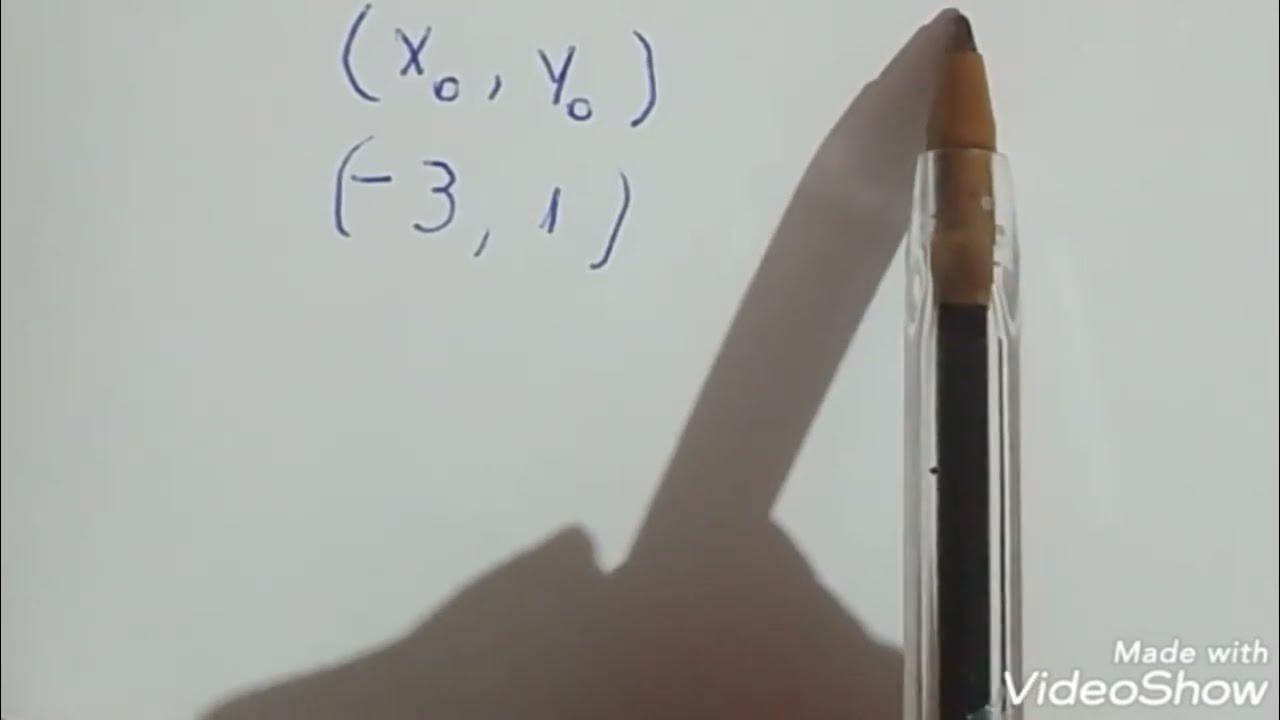Perpendicular Bisector Finding the Equation
Summary
TLDRThis educational video script explains the process of finding the equation of a line that is both perpendicular and bisecting a given line segment with endpoints (1, 2) and (5, 4). The midpoint is calculated, the slope of the original line is determined, and the opposite reciprocal slope is used for the perpendicular line. The slope-intercept form is applied to find the equation of the perpendicular bisector, which passes through the midpoint with a slope of -2, resulting in the equation y = -2x + 9. The script concludes with a brief graphing demonstration and an invitation to subscribe for more math tutorials.
Takeaways
- 📐 The video discusses finding a line that is perpendicular to a given line segment and bisects it.
- 📍 The first step is to find the midpoint of the segment using the formula (x1 + x2) / 2 and (y1 + y2) / 2.
- 📈 The midpoint in the example is calculated to be (3, 3) by averaging the x and y coordinates of the endpoints (1, 2) and (5, 4).
- 📉 To find the slope of the original line segment, the formula (y2 - y1) / (x2 - x1) is used, resulting in a slope of 1/2.
- 🔄 The slope of the perpendicular line is the negative reciprocal of the original slope, which is -2 in this case.
- 📝 The equation of the perpendicular line is derived using the slope-intercept form y = mx + b, where m is the slope and b is the y-intercept.
- 🔍 The y-intercept (b) is found by substituting the midpoint coordinates into the equation and solving for b, which is 9 in the example.
- 📊 The final equation of the perpendicular bisector is y = -2x + 9.
- 🖋️ The video provides a brief demonstration of how to graph the line, showing it crosses the y-axis at (0, 9).
- 👨🏫 The presenter, Mario from Mario's Math Tutoring, encourages viewers to subscribe for more math tutoring videos.
- 🔗 The video concludes with an invitation to check out Mario's YouTube channel for further assistance.
Q & A
What is the midpoint of the line segment with endpoints (1, 2) and (5, 4)?
-The midpoint is calculated using the formula ((x1 + x2)/2, (y1 + y2)/2). For the given endpoints, the midpoint is (3, 3).
How do you find the slope of a line segment?
-The slope of a line segment is found using the formula (y2 - y1) / (x2 - x1), where (x1, y1) and (x2, y2) are the coordinates of the endpoints.
What is the slope of the line segment connecting (1, 2) and (5, 4)?
-The slope of the line segment is 1/2, calculated as (4 - 2) / (5 - 1) = 2 / 4 = 1/2.
Why do you need the opposite reciprocal to find the slope of a perpendicular line?
-The slope of a line perpendicular to another is the negative reciprocal of the original line's slope. This is because perpendicular lines have slopes that multiply to -1.
What is the slope of the line perpendicular to one with a slope of 1/2?
-The slope of the perpendicular line is the negative reciprocal of 1/2, which is -2.
How do you determine the equation of a line given a point and its slope?
-The equation of a line can be determined using the point-slope form, y - y1 = m(x - x1), where m is the slope and (x1, y1) is the given point.
What is the equation of the line that is perpendicular to the segment (1, 2) to (5, 4) and passes through its midpoint (3, 3)?
-Using the slope-intercept form y = mx + b, and knowing the slope is -2 and the line passes through (3, 3), the equation is y = -2x + 9.
How do you verify if a line bisects another line segment?
-A line bisects another line segment if it passes through the midpoint of the segment and is perpendicular to it.
What is the y-intercept of the perpendicular bisector found in the script?
-The y-intercept of the perpendicular bisector is 9, determined by substituting the midpoint (3, 3) into the equation y = -2x + b and solving for b.
Can you describe the process of graphing a line with a negative slope?
-To graph a line with a negative slope, start at the y-intercept and for every unit increase in x, decrease the y-value by the slope's absolute value.
Outlines

This section is available to paid users only. Please upgrade to access this part.
Upgrade NowMindmap

This section is available to paid users only. Please upgrade to access this part.
Upgrade NowKeywords

This section is available to paid users only. Please upgrade to access this part.
Upgrade NowHighlights

This section is available to paid users only. Please upgrade to access this part.
Upgrade NowTranscripts

This section is available to paid users only. Please upgrade to access this part.
Upgrade NowBrowse More Related Video

Lesson 4-1, Video 5; Perpendicular Line 2

Introduction to point-slope form | Algebra I | Khan Academy

Irisan Kerucut - Elips • Part 11: Contoh Soal Persamaan Garis Singgung Elips

Finding the x-intercept of a line | Algebra I | Khan Academy

Questão de Geometria Analítica - equação da reta

MEDIATRIZ DE UM SEGMENTO? \Prof. Gis/
5.0 / 5 (0 votes)